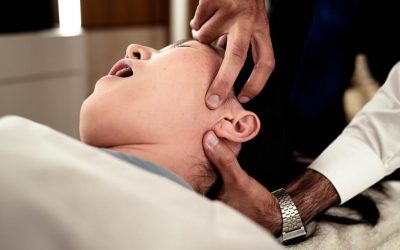Spine & Pelvis specialised treatment
Book a free 15 minute consultationSpine
The spine is considered the master organ of the human body, the overall health state of all bodily functions is highly dependent on the proper alignment and strength of its supporting structures and as per the close direct relationship it has with the nervous system.
In my experience, the evaluation and treatment of the spine must include in all clinical scenarios independent on the location and body part in question as most of the extremity’s and visceral conditions have a significant contribution form spinal/pelvic dysfunction.
There are two vital physiological concepts that makes the spinal column an essential component in maintaining our health, The Biomechanical and Neurological Foundation concepts.
The Spine is embedded in two important physiological principles that aids in the overall body homeostasis, The biomechanical and Neurological foundation concepts. Therefore, is considered the master organ in the body as it has and powerful influence on all the bodily functions and tissue health.
Biomechanical Foundation
The postural and alignment of the entire body has its core structure located in the Spine, alterations on this fundamental structure creates a significant consequential impact on the peripheral joints leading to further damage and loss of function. Hence, there is not a single joint in the body that does not has a direct or indirect biomechanical relationship with the spine.
The description below is an example of a common seen biomechanical chain of misalignments that starts from the spine triggering a sequential pattern of dysfunction to the entire leg and ending on the foot.
Lower Extremity Kinetic Chain
A dysfunction of the pelvis, may causes the femur to rotated inward, increasing the weight bearing forces at the knee and resulting in a misalignment of the entire knee complex which eventually leads to a fixation of the ankle joint. The loss of motion (hypomobility) at the ankle causes a compensatory increase of mobility (hypermobility) of the midfoot tarsal bones compromising the arches and predisposing to a flat arch deformity. Due to the abnormal foot mechanics, the Heel bone (calcaneus) compensates by deviating laterally resulting in outwards foot flare overstressing the plantar fascia (Plantar fasciitis), this alters pedal action forces resulting in torsional force to the first metatarsal deviating and rotating medially ( bunion deformity) causing the sesamoids to migrate laterally and the end result is a calcaneal heel spur.
The example above is one of many dysfunctional kinetic patterns that may develop from a primary spinal dysfunction emphasising the importance of evaluating and correcting the spinal misalignments when dealing with any spinal and non-spinal conditions.
The Neurological Foundation
The spinal column encloses one of the most vital system in the body, the nervous system. The entire 100 trillion cells in our body has a bidirectional nerve supply to and from the brain coordinating and maintaining all our bodily functions aiming to achieve the ideal balance and physiological homeostasis. When there is a dysfunctional misalignment in one of the 33 spinal vertebrae, it can irritate the nerves exiting the spine through the excess build up of inflammation or direct pressure from the misalignment segment disturbing the normal neurological flow and eventually affecting the ‘’end organ’’ they interact with (muscles, joints, heart, gut, etc,…) predisposing to several health problems and a number of referred neurological patterns of pain throughout the body.
The Healthcare practitioner should treat the spinal misalignments not only to restore the biomechanical restrictions but also to use as a ‘’window’’ to optimise the function of the nervous system.
Another Important concept is the relationship of the spine with our autonomic nervous systems, the sympathetic and parasympathetic. These two systems control all the involuntary bodily functions and are in constant reciprocity within each other proving a fine neurological control and vital force to regulate and maintain homeostasis that is, physiological equilibrium. An imbalance in this dual system, possibly caused by spinal dysfunctions, could lead to a number healthcare conditions as described below.
Note: The description below is based on my clinical experience and patient responsiveness, there is no claim being made about the treating this systemic healthcare disorders.
Spinal Dysfunction affecting the Parasympathetic system tends to create a trend of signs and symptoms in the body triggering; Increased muscles tonicity (spams), Sharped localised pain, Increase secretion of the glands and Rise in bodily function speed predisposing to the following associated conditions:
Wet productive asthma, Draining sinus, Diarrhoea, Hypoglycaemia, High Blood pressure, Tachycardia, Overactive Bladder, Bell’s palsy, Vertigo, Frontal Headaches, Tic Doulourex, Hyperthyroidism, Heavy period discharged and erection dysfunction.
Spinal Dysfunction affecting the Sympathetic system tends to create a trend of signs and symptoms in the body triggering; Decreased muscles tonicity (Flaccid paralysis), Diffuse pain, Decrease secretion of the glands and Slow in bodily function speed predisposing to the following associated conditions:
Dry Asthma, Blocked Sinuses, Pneumonia, Constipation, Colitis & Diverticulitis, Haemorrhoids, Hyperglycaemia, Low Blood pressure, Bradycardia, Varicose Veins, Bladder issues, Allergies, Migraines, Multiple Sclerosis, Skin issues, Hypothyroidism, Lethargy, Depression, Amenorrhea, Endometriosis, Ejaculation issues.
Based on all this information, every healthcare condition regardless on their location in the body, should start with a proper spinal examination and realignment in order to facilitate the neurological connection and function of the tissues in question.
The Spinal column receives a solid foundation support from the Pelvic girdle that allows an elaborate weight offset distribution throughout the entire body structure permitting a reasonable amount of joint play to accommodate the constant biomechanical stress that are placed upon its structures during daily activities. Hence, there is a strong intricate system that provides the strength and resilient as described below.
The 5 Spinal defence Mechanisms is hierarchically made up by the proper Alignment of the each vertebral segment followed by the strength of the deep and superficial back Muscles then by the health a number of Ligaments holding each spinal unit together, the proper cushion support provided by the Discs and by the frame support of the vertebral Bones. The extend and level of tissue damage is dependent on the number of protective layers that have been compromised from the trauma.

For instance, when the first protective Alignment layer is affected, there is a misalignment dysfunction resulting in potential postural deformities as seen in extreme thoracic kyphotic spine (increase curve in the mid-back), therefore I consider Level 1 Injury as there is only one main structure that has been affected. In a disc injury where the trauma impaired four layers of the protective mechanisms ( Alignment, Muscles, Ligaments and Disc), its considered Level 4 Injury as there were four layers that have been compromised allowing the biomechanical stress to end up damaging the inner structures, the Disc. In summary, there are 5 protective layers of defence and 5 corresponding Level of injuries, higher the level of injury the more substantial the number of tissue damage as per the accumulative damage that is passed from one phase to the other. (Level 5 injury means that all the previous defence mechanisms have been compromised up to the 5th layer as seen in spinal compression fractures).
Throughout my extensive education and clinical experience, I conclude that even though there are several named pathologies and diseases described by the traditional medicine, the origin and the predisposing factors that have lead the development these healthcare conditions shared similar causation and pathophysiological principle.
In addition, due to the multiple levels of tissue damage often seeing in injuries there is not a single approach that is enough in order to properly managed and fully resolve the condition in question, hence I developed specific treatment protocols utilising different health care methods and techniques that eventually allowed me to efficiently resolve and heal as well as prevent the further development of future injuries.
The protocols I developed aim to properly repair and restore the entire self-defence mechanism
5 Levels of Spinal injuries and the corresponding associated conditions.
Spine Therapy
Level 1 injuries - Misalignment dysfunctions
Note: Minor joint misalignment does not create any visible deformation. Clinical assessment and X-ray imaging are paramount for diagnosing subtle joint dysfunction.
Short leg deficiency, Flat spine, Hyper lordotic spine, Scoliosis (functional or structural), Congenital spondylolisthesis, Swayback deformity, Rib misalignment syndrome.
Due to the close relationship the spinal column has with the nervous system, there are several neurological pain patterns that could developed form a dysfunctional misaligned spine.
Cervical radiculopathy, Thoracic intercostal neuropathy, Lumbar/Pelvic radiculopathies and several types of Headaches syndromes, Sciatic Pain, Thoracic Outlet Syndrome, Acute Herpes Zoster and Complex regional pain syndromes, Femoral Neuralgia.
Level 2 injuries - Misalignment - Muscle/tendon/fascia/injuries
Level 3 Injuries – Misalignment – Muscle compromised - Ligamentous injuries
Level 4 Injury - Misalignment – Muscle compromised – Ligamentous weakness - Cartilage Injury
Disc Herniation (Protusion and Extrusion), Spinal Spondylosis, Spinal Spondylarthrosis, Spinal Facet Syndrome (with or without ‘’trapped’’ cartilage), Tietze’s Syndrome, Sacro-Iliac Syndrome (with or without fad pad entrapment), Spinal Stenosis.
Disc Imaging degeneration classification aids to provide the level of chronicity of the injury and appropriate care. There are five progressive levels of disc deterioration – D1, D2, D3, D4 and D5.
Level 5 Injury- Misalignment – Muscle compromised – Ligamentous weakness and Cartilage damaged leading to Bone fractures
Miscellaneous Spine conditions
Rheumatoid Arthritis and Ankylosing Spondylitis; Its part of an autoimmune systemic condition expressing inflammatory cascade withing the spinal joints and soft tissue.
Covid 19
Covid 19Coronavirus general guidelines When visiting the clinic, we ask you to please remember these general principles to ensure we all have a good clinic experience, minimise risk and stay safe. •...
Treatment Modalities
Treatment methods I utilize in my practice to restore and enhance the healing of the entire layers of tissue injuries according to the specific healthcare conditions diagnosed.
Jaw
Temporomandibular Joint (Jaw)The Temporomandibular joint is a complex structure made up by the temporal and the mandibular bone supported by several powerful muscles and ligaments and controlled by...
Wrist/Hand
The hand is considered one of the most adaptable and complexes areas in the body, there is an intricate neurological network and muscle/tendon leverages system that allows the hand to be controlled in such precision and dexterity like any other body part.
Shoulders
The shoulder is considered as one of the most complex areas in the body, there are several joints that made up the entire shoulder girdle supported by a sophisticated stabilization intrinsic
Knee
KneeThe knee is often seen as the weak link of the lower extremity as its sits between two stable joints, the ankle and the hip, therefore to accommodate this biomechanical disadvantage, there is...
Hip
HipThe hip is made up by the connection between the femur and the pelvis. There is natural physiological locking mechanism that allows this joint to be one of the most stable areas in the body. In...
Elbow
ElbowAs an extension of the shoulder mechanics, the elbow provides a great amount of versatility and freedom for the usage of the wrist and hands during daily activities adding a reliable and...























